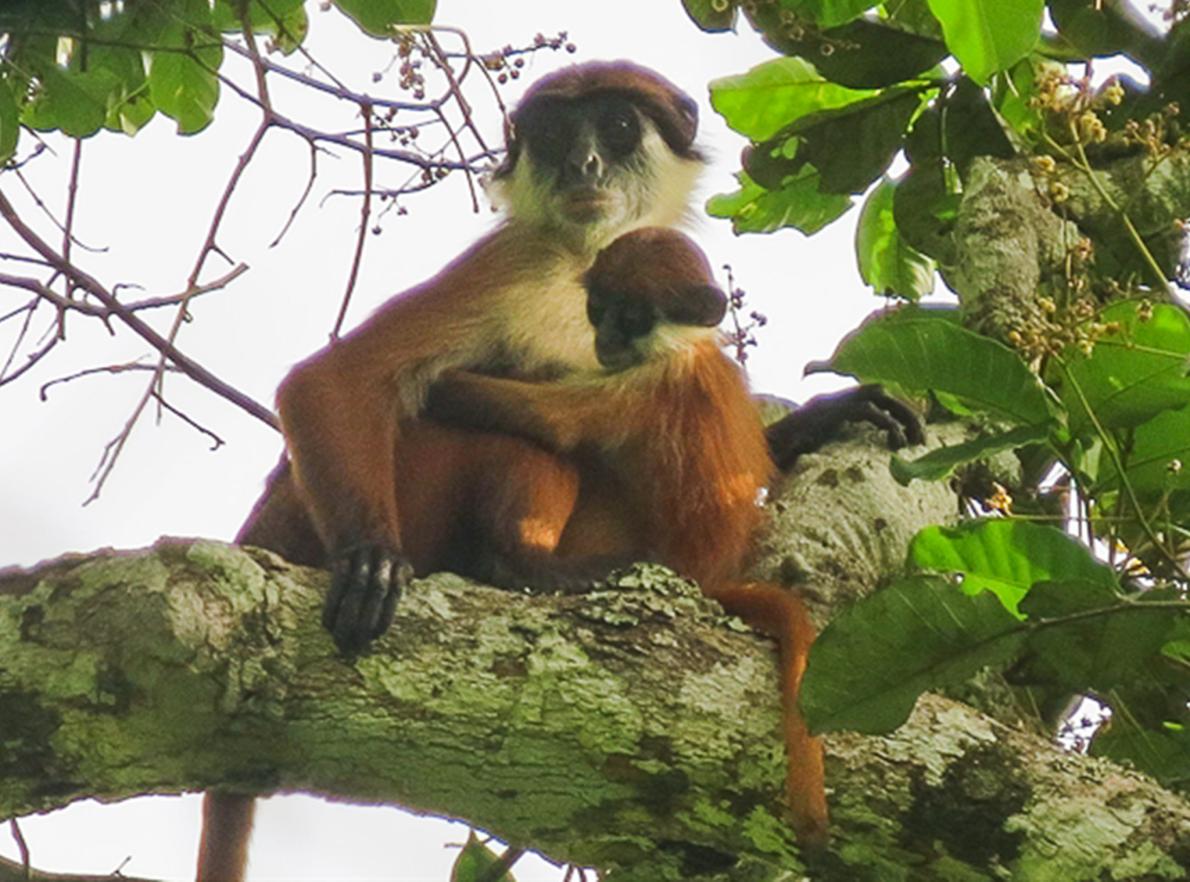First-Ever Picture Taken of a Rare African Monkey
The Bouvier’s red colobus monkey had not been seen in some 40 years and was thought by many to be extinct.
The Bouvier’s red colobus monkey had never been photographed until now.
Long feared extinct, the rare primate hadn’t been observed by scientists since the 1970s. But late this February two independent researchers, Lieven Devreese and Gaël Elie Gnondo Gobolo, managed to track it down in the Republic of Congo’s Ntokou-Pikounda National Park, a 1,765 square-mile area established with the help of the Wildlife Conservation Society in 2013.
Devreese’s photograph, which shows a female with her offspring, is the first ever taken and confirms the existence of the elusive species to the scientific community.
Though first described in 1887 extremely little is known about Bouvier’s red colobus (Piliocolobus bouvieri), which is classified as critically endangered.
The local people, on the other hand, were already well aware of the monkey’s existence, said Devreese. He worked with local guides to find the best areas to spot them.
“Of course I felt a lot of satisfaction, and I felt relieved,” said Devreese, who even set up a fundraiser on the crowdfunding site Indiegogo to help finance the expedition.
“From the start, it was clear that the local people know the species well, so I didn’t want to fail,” he said.
“The species has [not] been seen for several decades by scientists, but this is just because no one looked for them,” even though some researchers had urged a search, he said.
The tricky Congolese terrain, which is rife with swamps and rivers, may have contributed to the long wait for the world’s first photo of the species.
“The area is difficult to access, only via the rivers, and I don’t know of any NGO working in the area,” said Devreese.
“It is always encouraging to see photographic evidence that a species thought to be extinct isn’t,” said Valerie Schoof, a postdoc in the department of anthropology at McGill University and a National Geographic grantee.
Schoof says the difficult terrain that the monkeys call home is in a sense a double-edged sword, protecting them from human threats but also limiting scientists’ ability to study them.
“The river and swamp areas that these monkeys seem to prefer make it difficult for scientists to study in this area, but this may also be the very habitat characteristics that limit human interest/ability to extract forest resources such as the hunting of bushmeat or logging of trees,” said Schoof.
Schoof also pointed out that the expedition likely succeeded due to help from locals familiar with the area.
“The photos highlight the importance of engaging with communities, where local knowledge can be useful in confirming the survival of local populations of critically endangered species,” said Schoof, who added that the size and viability of the population now needs to be studied.
For his part, Devreese says he hopes the photos will help the underfunded park that the Bouvier’s red colobus calls home get the support that it needs.
“We hope our discovery will draw attention to the park,” he said, “so that maybe an international NGO could get involved to work together with the Congolese park staff.”

